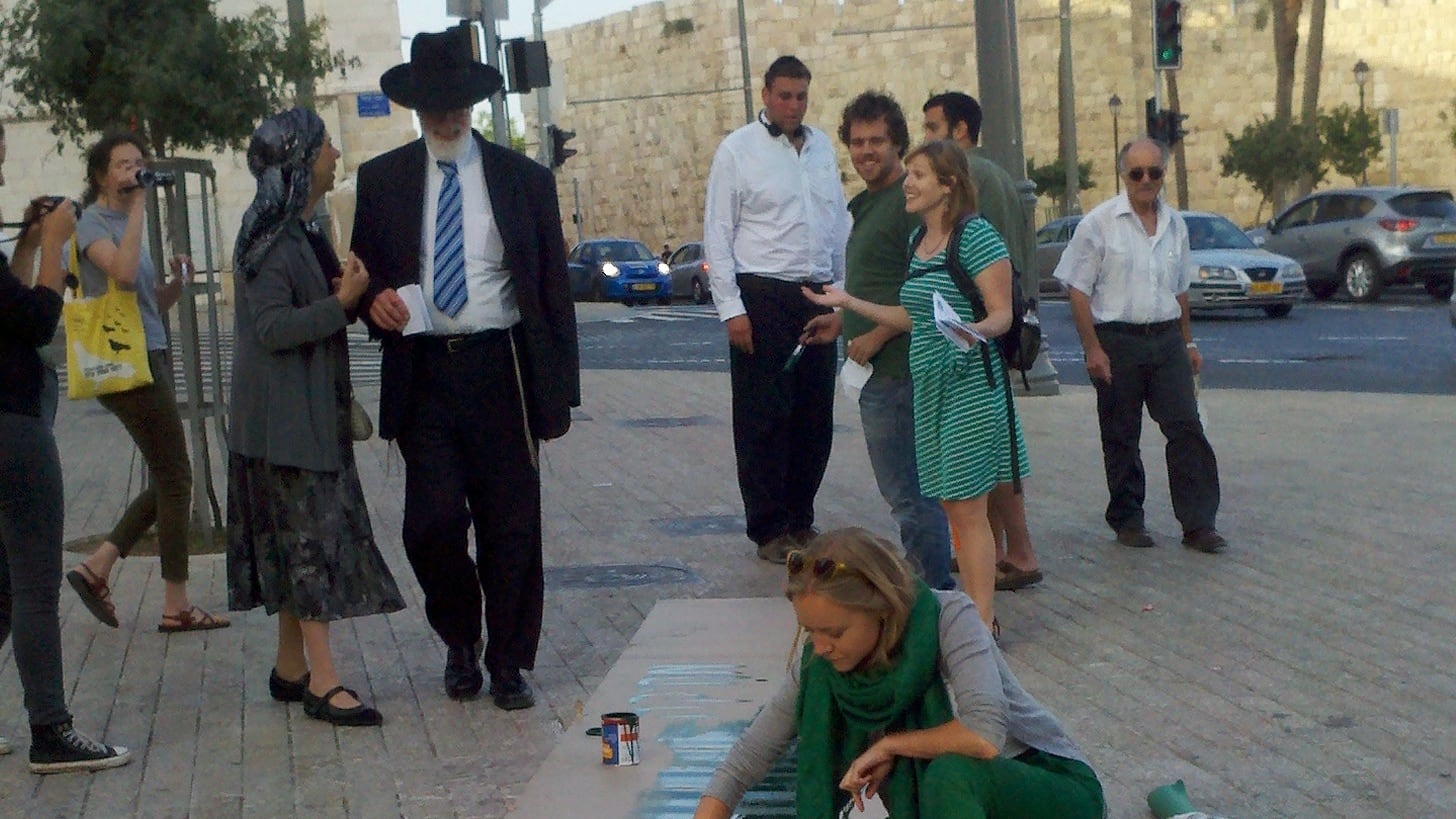There is a green line that runs through the city of Jerusalem.It exists only on maps, and pretty much only on maps not printed by the State of Israel or other Jewish institutions, but it exists, and it represents a part of the international border between Israel and the West Bank as of June 4, 1967.
It exists even though official Israel and its supporters have done everything within their not-inconsiderable power to erase it in word and deed, creating a municipal behemoth that is currently one hundred times larger than the city was a century ago, pushing Palestinians out of neighborhoods and family homes and rendering fundamentally unholy the very city towards which Jews pray three times a day.

Today is June 5, of course, the anniversary of the opening salvos of the 1967 Six Day War in which Israel captured Jerusalem and the West Bank from the Jordanian army, the day to which many Israeli and Diaspora Jews look as the beginning of a miraculous liberation of our holy city—which is why a small group of Israeli and Diaspora activists chose this day to remind the world that no amount of governmental sleight-of-hand can change the fact that a border exists, and it runs through the very heart of a city that is endlessly declared Undivided.Anti-occupation collective All That’s Left brought out paint and brushes, got down on the ground, and painted a literal green line where it exists on maps and should exist in political reality. Presumably because they’re good citizens (in Hebrew parlance, yeladim tovim Yerushalayim), rather than paint directly on the ground, they painted on long pieces of cardboard, and as they painted, they engaged with onlookers.“Some have joined in the painting, others have yelled ‘jerusalem is only for Jews!’,” activist A. Daniel Roth tweeted as he painted, and later: “Religious Jewish woman agrees extremism is a problem, but wont concede the occupation is the cause…. Now the police are reading our literature and asking about the greenline that we are painting.”
ADVERTISEMENT
Activist Emily Schaeffer explains: “It’s disturbing to me that the average Israeli or visitor to Israel is able to go about daily life without noticing the occupation and oppression that exist on the other side of the Green Line, and that is because that line has been erased, both literally and conceptually.”
And of course, Israel has erased the international border, the Green Line, in many, many places, all up and down the West Bank, via settlement construction, Israeli-only roads, and the land-grabbing Security Barrier. The simple act of brushing green paint down a Jerusalem sidewalk was intended, activists say, to call attention to the entirety of occupation—not just that in the nation’s capital—on the anniversary of its beginning.
Yet it’s undeniable that the occupation is most easily denied in Jerusalem. Israeli and Diaspora Jews know what and where the West Bank is—they might support Israel’s settlement in that land, but they can’t fool themselves that it’s anything but a military occupation, at least for now.
But the average Israeli long ago stopped thinking of Gilo, Pisgat Ze’ev, Ramat Eshkol, and French Hill as settlements. They’re just neighborhoods. Nice places to live, where the kids can run through the hilly yards behind sandstone apartment blocs.
Reminding them, the Diaspora community, and the world at large that these neighborhoods (and many more like them) are every bit as illegal as the West Bank hilltop communities they see on the nightly news is an important, subversive act.Because if American and Israeli Jews are going to support the settlement project and all it entails—occupation, human rights violations, a possible end to the two-state dream—they need to be honest about it. They need to actually see what it means, especially in our holy city.Green paint and cardboard are a good place to start.UPDATE: Watch All That's Left's video of the event below.






